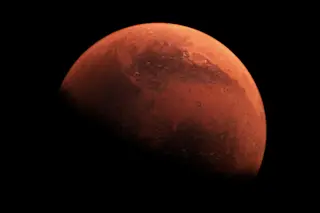Bands of ice and sand at Mars’ north pole reveal an ancient climate that swung between warm and cold.
Mars, now dry and dusty, still holds water ice at its poles, and evidence strongly suggests it was once a planet where water flowed freely across the surface.
The Mars Reconnaissance Orbiter’s Shallow Radar (SHARAD) has peered deep into the northern ice cap and found layers of ice and sand buried beneath. The find adds nuance to the planet’s climate history, and reveals why some of the planet’s water remains locked in ice, instead of being lost to space.
Mars’ north polar region includes a site called the cavi unit, made up of ice and sand, buried underneath the more visible northern ice cap. SHARAD can peer up to a mile and a half into the ice, imaging the different layers. What it saw were alternating layers of sand and ice.
...














